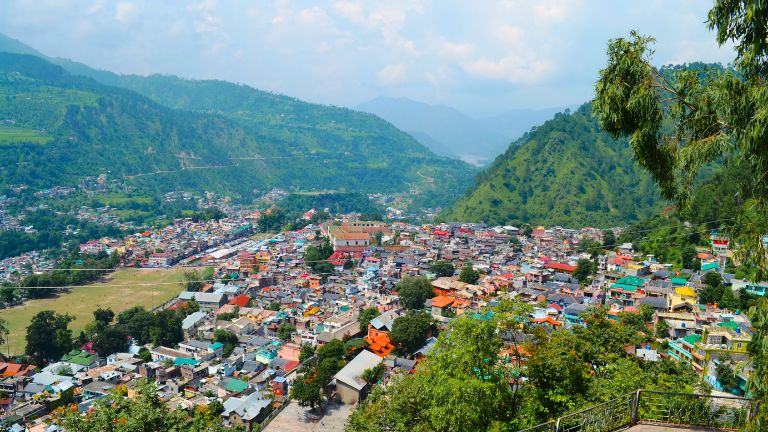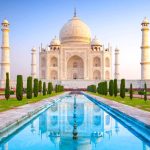An Overview Of Discovering Tranquility: Things To Do In Chamba
- Beautiful Chamba Valley situated in Himachal Pradesh, India The region is also famous for its scenic beauty, ranging from the abundant greenery to hills and rivers. Traditional villages scattered through the valley provide one with local culture and welcoming manners.
- Keeping this in mind, local and international tourists visit the Chamba Valley to experience its peaceful vibes that attract people who would wish for a nature retreat. The tourism in Chamba largely revolves around its temples, lakes and on enjoying the beauty of mother nature making it a perfect tourist destination. Paddar valley also provides an excellent trekking and surrounding Himalayan Landscapes to explore.
- All in all, the Chamba Valley adds to be a hidden little gem of Himachal Pradesh awaiting access for trekkers and travelers equally with that rich natural beauty accompanied by its cultural past amidst absolute serenity thus perfecting as an offbeat tourist spot.
Things To Do In Chamba:
On your Visit, Do make plans to get yourself indulged in some of the best things to do in Chamba for an exciting vacation.
We have listed down the best activities that one must do while exploring Chamba for a worthwhile trip that will remain memorable for a lifetime.
- Trekking
- Boat Ride
- Shopping
- Camping
- River Rafting
- Kayaking & Canoeing
- Pickning At Central Park
- Try Local Cuisine
- Attend Local Festival
- The Chamba Chowgan
- Mountain Biking at Sach Pass
Trekking:
This place also does not lag in offering you well-crafted trekking trails for all kinds of adventurers, experienced or novices. This town has some of the best trekking trails in the country.The most obvious of all things to do in Chamba is undoubtedly, trekking. Few Famous Treks include Chobia go, Pangi Valley, Manimahesh range, Kugti move, Jalsu Pass.
Trekking Advice: wear supportive shoes, warm and comfort clothes as well as supply snacks or water bottles.
Boat Ride:
And one thing that you should not forget to experience in Chamba is boating while must-visits like Panch Pulla, Chamera Lake and Dam etc. These spots have geographical features perfect for the crystal-clear waters and breath-taking location. So do not forget to take a boat ride for the best experience of your life.
Quick Tips: Ensure you book your boat ride in advance & always follow regulations or security tips given by respective authorities.
Shopping:
A person who loves to shop handcrafted and traditionally made things. If yes then Chamba will become a shopping paradise for you to gather as much memorabilia on your stay possible. This town has markets abundant with arts, shawl weaving to beautiful miniature painters, needlecrafts or wood arts the list is long.
Visit these places for shopping: Chaugan Flag Market, Himachal Emporium (RangMahal), Dogra Bazaar.
Camping:
Camping trips are made for all the adventure and wanderlust travelers. If you are planning to go camping with your friends in Chamba, then trust me this is the perfect place on Earth where all of us can enjoy stargazing together and get close to mother nature around a bonfire.Famous Campsites in Chamba: Dalhousie, Manimahesh Lake and Camp X Terra
Usual Sightings: Blue Skies, Starry-Night Full Of Stars, Quiet Place and Chill Weather.
River Rafting:
Chamba is also ideal for those who wish to add some adventure in their bucket lists then River Ravi and its tributaries specializations in White Water river rafting that one can enjoy to the fullest while visiting this town. This rafting is closed in the winter and monsoon months (by rainfall) due to safety purposes.
Level Of Rafting: Not only professional swimmers but also the beginners and even non-swimmers can try out river rafting in Chamba.
Kayaking & Canoeing:
In addition to white water river rafting, the river Ravi and its tributaries also offer an opportunity for other sports like kayaking & canoeing in Chamba. This is the most calming and relaxing water sport which offers you to paddle at our speed and experience nature more than anything.
Note: Wear the life-jacket whenever you row on water and take professional help as needed especially when you are a non-swimmer.
Pickning At Central Park:
The park was swarming, people of all ages sat in groups and drank tea with friends as children ran around. It is also known as Chaughan. The best about this park, however, is Gandhi Gate that marks the arrival of Lord Curzon to Mussoorie. It used to be the venue for cricket tournaments too. The premises also have a Shiva Temple which is conspicuous to all. This park is the origin of the famous Manimahesh Yatra pilgrimage. People deliberately come here just to experience the charm of this beautiful location. Plus one can see the panoramic view of hill station from this park.
Try Local Festival:
One of the best you can get in Chamba are these local festivals on display. These local festivals in a way represent the traditional values that this region is historically known for and thus imitate Chamba’s ancient souls & its cultural roots.The festivals you must surely attend are the Sui Mata festival and Minjar Festival. Sui Mata Festival is celebrated for four days in March/April every year to commemorate the legendary Princess Sui. This festival is annually celebrated between July and August during maize harvesting season.
Try Local Cuisine:
So, any trip to a location will never be complete without trying the local delicacies. Most of the places to eat in Chamba including food outlets and roadside stalls are good options for a meal. Make your way to the many dhabas in and around Chaugan market area. There are a lot of places you can go to try these new recipes here, like Ravi View, Khatir Restaurant and Jagan Restaurant etc. Specialty: Aloo paratha and Chow Mein
Recommendation: Must try the local madra dish of chickpeas and yogurt.
Mountain Biking at Sach Pass:
Sach Pass is also said to be the Toughest pass of India as well as the world, due the nine kilometer rugged terrain path which one has to complete through riding. The 130km course can be tackled in an unvarying time frame of between 14 to16 hours and contains some of the most testing water crossing, roads en route begin with typical hard packed wide valleys but give way after, say -20-km. It is kept closer for 8 months and locals use it from June to September.
Height: 4500m
Connection – connects Chamba Valley with Pangi valley in Himachal Pradesh.
Wild Safari In Tundah Wildlife Sanctuary:
Tundah Wildlife Sanctuary is situated at the junction of Tundah nalla and river Ravi, 45 km from Dalhousie. The altitude of this sanctuary is 2074 to 5532 m and adjoins The Kugti Sanctuary from its (eastern side) through a forest corridor.
This beautiful central area is dominated by many kinds of Indian wildlife including Himalayan Tahr, Ibex, pheasants and lots; more. It is also home to a rare Musk deer.
Flora: Kail, Deodar, Poplar, Robinia, Walnut Fir and Spruce etc.
Fauna:Ibex, bear, langur, leopard,musk deer,Himalayan tahr,Himalayan fox,barking deer.
Chamba Is Famous For:
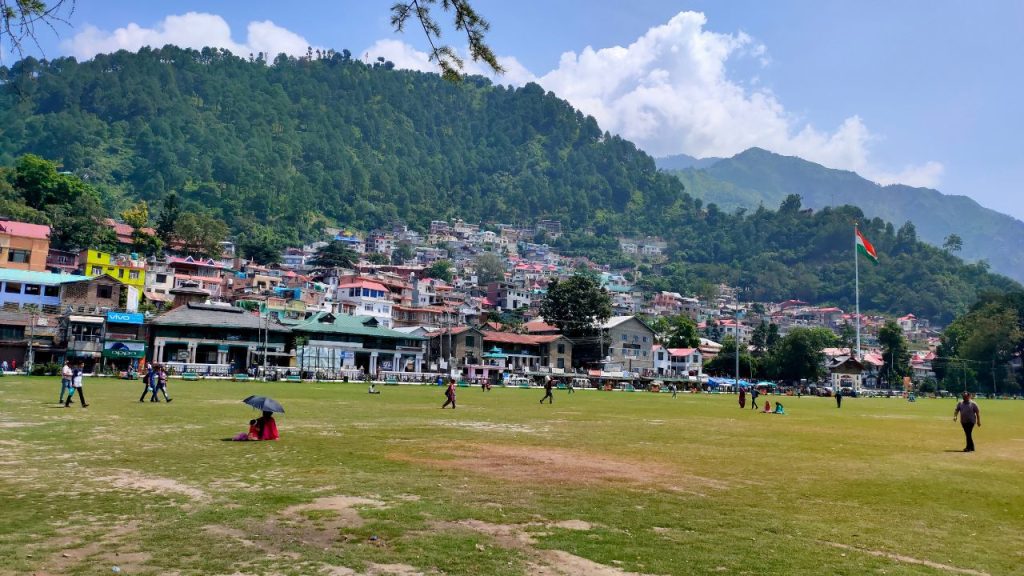
- Ancient Temples: to get in touch with the spiritual side of life on earth, you can visit ancient temples like Lakshmi Narayan Temple. Rajarani Temple, a temple complex of the 10th century dedicated to Lord Vishnu and sometimes identified as being in honor of Lord Shiva-a magical charm for its cenotaph execution based on floral motifs no doubt.
- Rich Cultural Heritage: The town has a rich cultural heritage that is expressed through various festivals, rituals and traditional arts. The Minjar Fair is celebrated like a festival to compensate for the culture of the area
- One of such beautiful places is Chamba, you will find the green meadows and snow-capped mountains around. While places like Khajjiar, which is often known as Mini Switzerland of India and Chamera Lake attract one who loves nature along with the adventure lovers.
- Bhuri Singh Museum:- Situated in Chamba town, this museum has a vast collection of artifacts, paintings and manuscripts illustrating the history, art and culture of the region back to the 4th century.
- Crafts and Woolens: Chamba is famous for its intricate crafts that include wood carving,embroidery and metalware. The most famous Chamba rumal embroidery is known by its particular stitch patterns and designs.
- Local Flavors: The town also has a great in-house array of Himachali dishes, which are the local specialties with Chana Madra, Siddu and Babru being some of them.
All in all, Chamba is famed far and wide for its ancient history combined with cultural festivity, scenic beauty as well as traditional craftsmanship.
Places To Visit In Chamba:
- Laxmi Narayan Temple
- Khajjiar
- Rock Garden at Devi Dehra
- Dalhousie
- Bhuri Singh Museum
- Manimahesh Lake
- Kalatop Wildlife Sanctuary
- Gandasru Mahadev
- Wild Safari In Tundah Wildlife Sanctuary
Laxmi Narayan Temple:
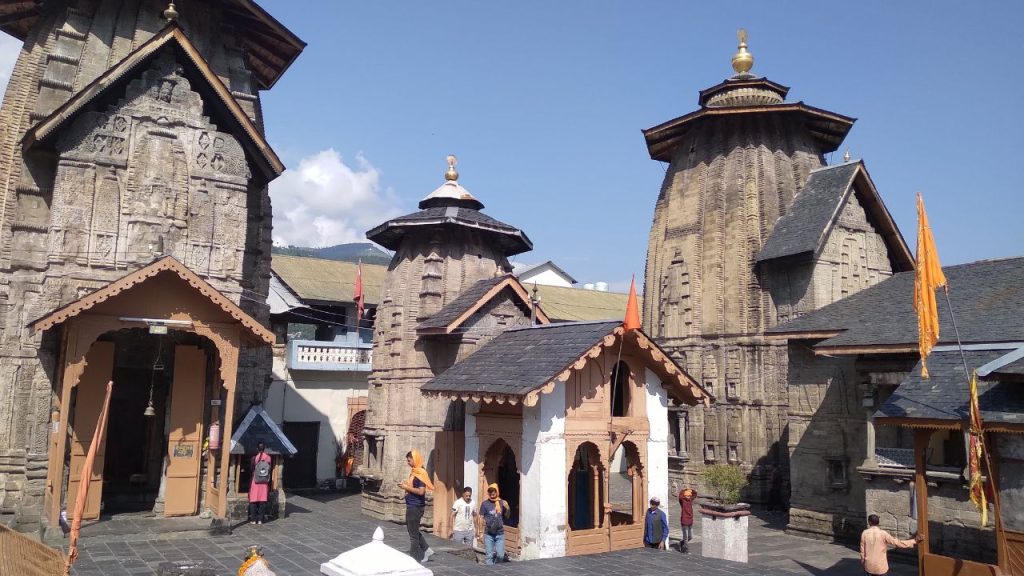
The most ancient temple of Chamba town is the Laxmi Narayan Temple that was built by Sahil Verman in the 10th century A.D. This temple is constructed in the Shikhara style. Within this larger complex are many other temples as well. It was built by Raja Jeet Singh’s queen Rani sarda as late as 1825, named Radha Krishna Temple. Sahil Verman was said to have built the Shiva temple of Chandragupta, and his son Yugkar varman has been ascribed with creating Gauri Shankar Temple.
Khajjiar:
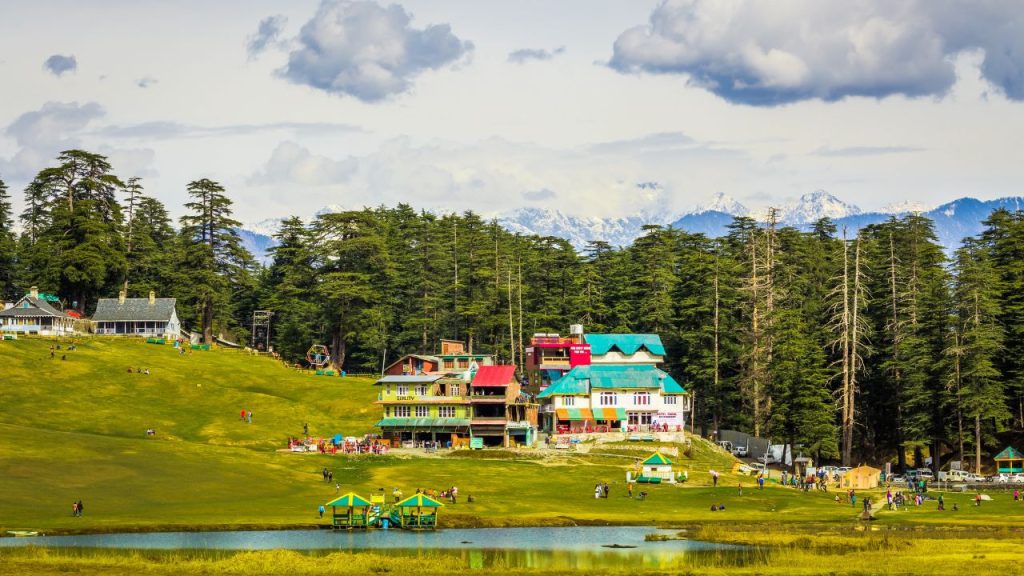
A mesmerizing natural beauty, it is an enchanting paradise amidst the beautiful town of Khajjiar located in Chamba district Himachal Pradesh. Popularly known as the “Mini Switzerland of India” because it looks similar to that in Switzerland. It is surrounded by lush green meadows, thick pine and deodar forest. The road to Khajjiar Lake is another place sparsely visited by tourists; the beautiful zig-zag roads offer a view of panoramic Himalayas and valleys all around.
Rock Garden at Devi Dehra:
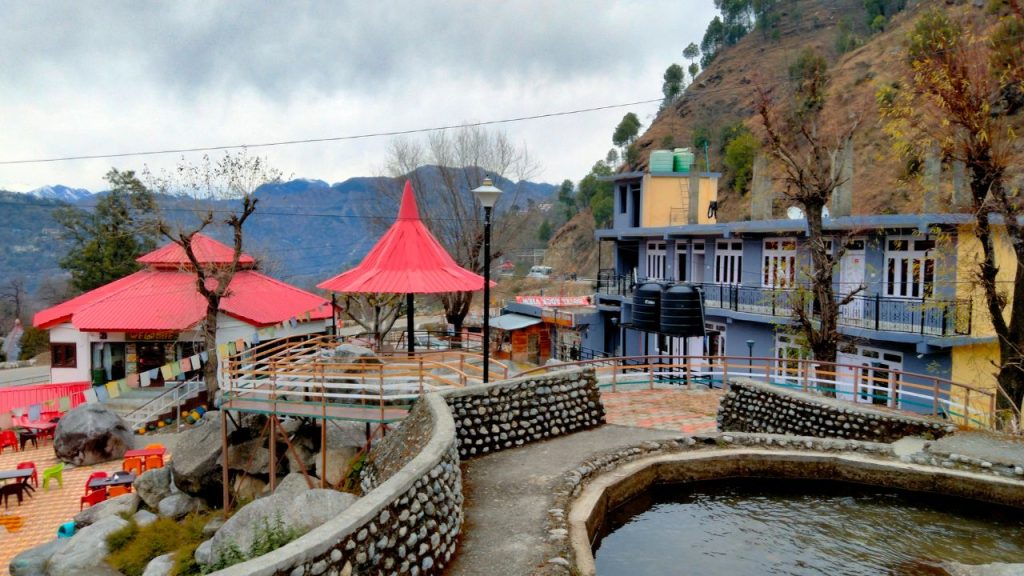
It is an inspiring place due to its artistic beauty and natural charm. These gardens include well-crafted rock structures, symmetrically sectioned pathways and several shades of green across the area that make it essential for any traveling culture-buff.
It is a group of rock carvings depicting scenes from mythology to contemporary art. The Rock Garden is full of several sculptures and art installations where visitors can immerse themselves in the beautiful surroundings and artistic aura.
Dalhousie:
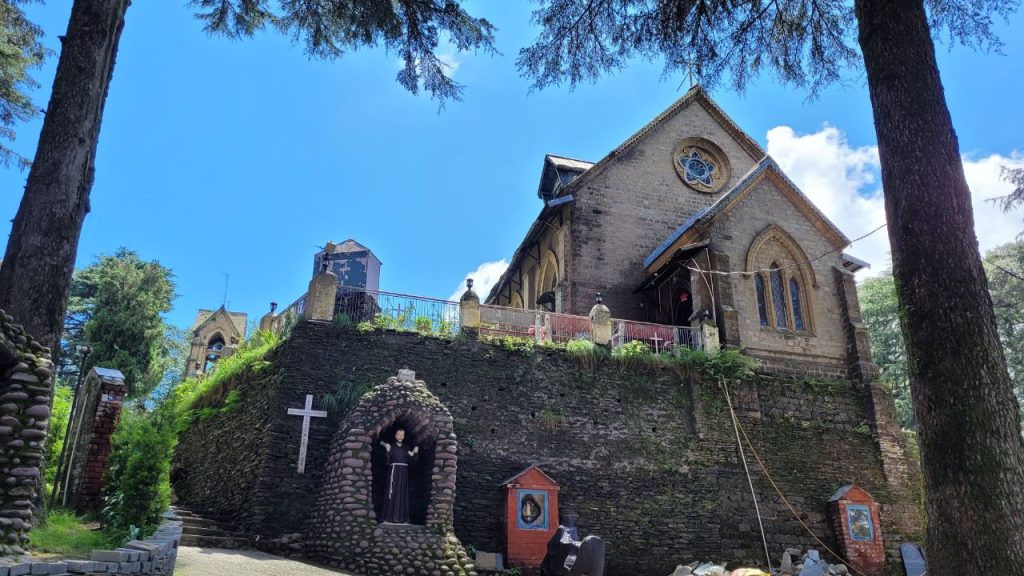
It is a stunning hill station situated on Five Hills in Himachal Pradesh and offering fantastic views of the snow capped peaks of Dhauladhar ranges. Widely known for its meadows, lush green forests and waterfalls the valley is more popular amidst honeymooners and family vacation.
The name is taken from the British Governor General of the 19th century, Lord Dalhousie. Nestled with immense beauty this valley was a favorite summer destination for colonial Britishers who established age-old churches. Dalhousie comprises old-world charm, breathtaking natural landscapes, pine-clad valleys and mountains enveloped in mist.
Bhuri Singh Museum:
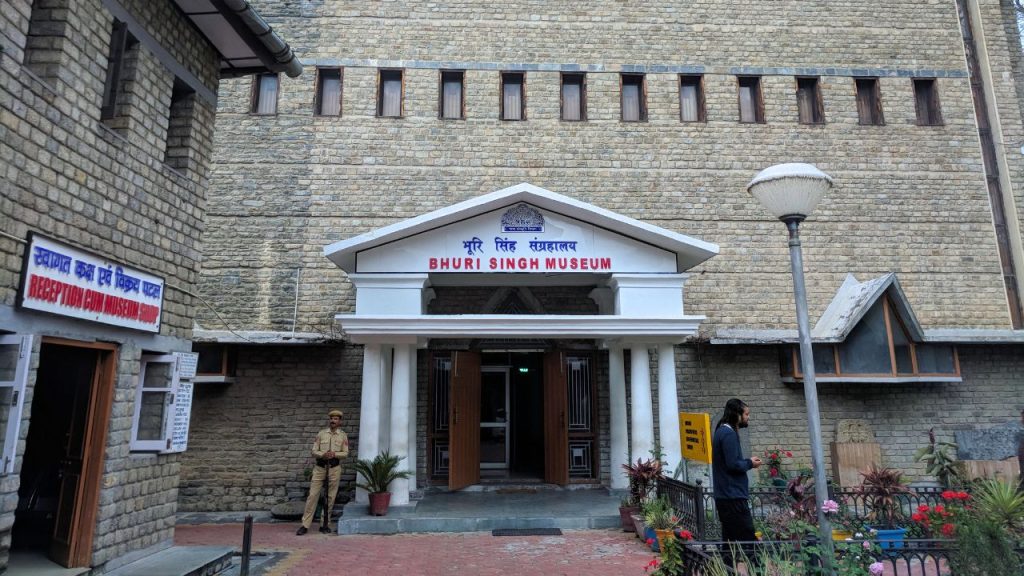
This museum is perched on the old Chamba Palace and exhibits paintings from all of Basholia, Kangra, and Chamba Schools as well. This building was built in memory for Raja Bhuri(Old ruler of chamba) In addition to that, you will also view the different musical instruments, armours and traditional costumes alongside jewels among other artifacts representing cultural features of antecedent Chamba society.
Visiting Hours: Anytime and any day from 10 AM to 5 PM with the exception of Mondays. The gazetted holidays remain closed.
Entrance Fees: INR 40/- for Indians & INR 100/- for foreigners.
Note: Camera -You will be charged extra INR 50/- (For Indians) & INR 100/- (For Foreigners)
Manimahesh Lake:
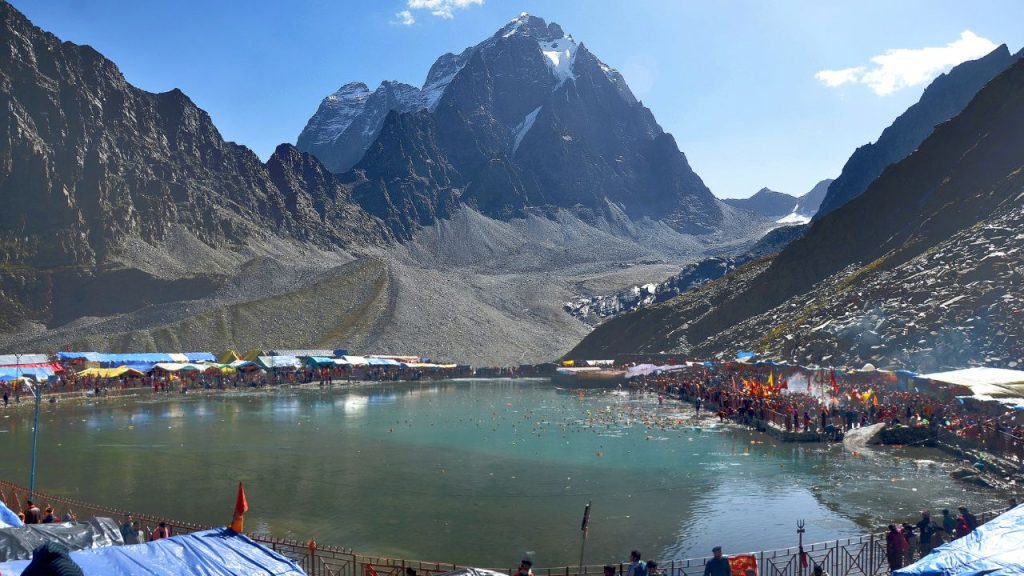
About the Manimahesh Lake : The ManiMahesh is located 26 km from Bharmour in Budhil valley, which lies between Gauri and Chordar valleys at an altitude of about 13,390 feet above sea-level. The lake is 13,000 feet above sea level at the foot of Kailash peak (18,564 ft). Thousands of pilgrims take a dip in the holy water every year on the 8th day (Ashtami) as people assemble to perform fair up there.
Kalatop Wildlife Sanctuary:
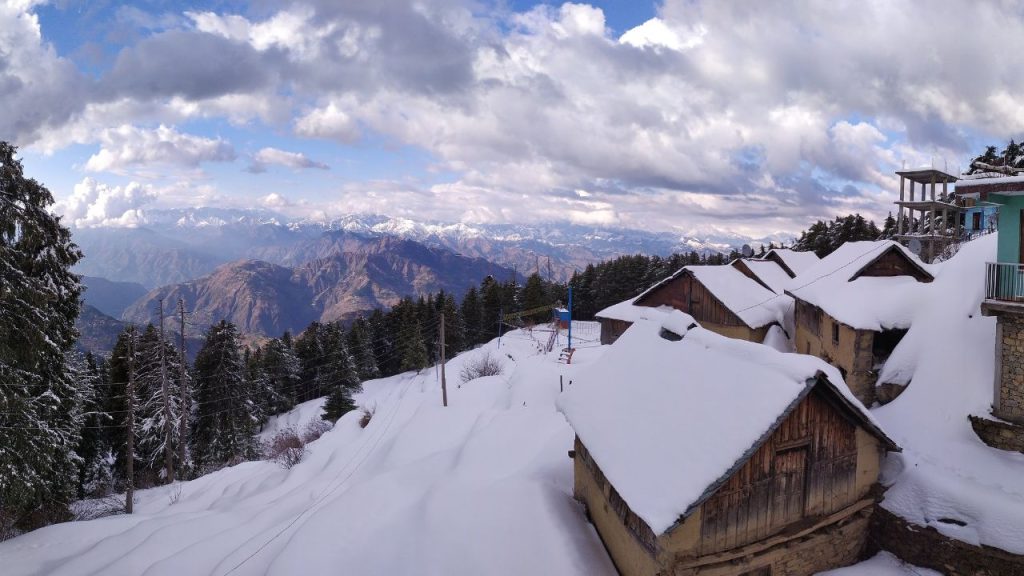
It is an animal sanctuary at Kalatop and Khajjiar in the Chamba district of Himachal Pradesh. Common animals found here are pheasants, serow and black bear. This sanctuary comes on the way of Ravi River and is filled with coniferous, oak forest. This sanctuary is home to exotic flora and fauna of Himachal Pradesh with provision for trekking, jungle safari or just a relaxed picnic which would bring you right next to nature.
Gandasru Mahadev:

It is a two day trek from the Devil Kothi Village high in deep thick pine forest to this annual pilgrimage, starting every year during September. Such lakes are deified as they are believed to be the place of gods and goddess like other mountain lakes in Himachal Pradesh. The lovely Gadsaru lake sits at around 11,500 ft and is a small circular lake which sits right near the base of another peak by its name. One corner has a small temple dedicated to Goddess Kali where pilgrims from all over participate in the 16 km walk up from Tissa every year.
Wild Safari In Tundah Wildlife Sanctuary:
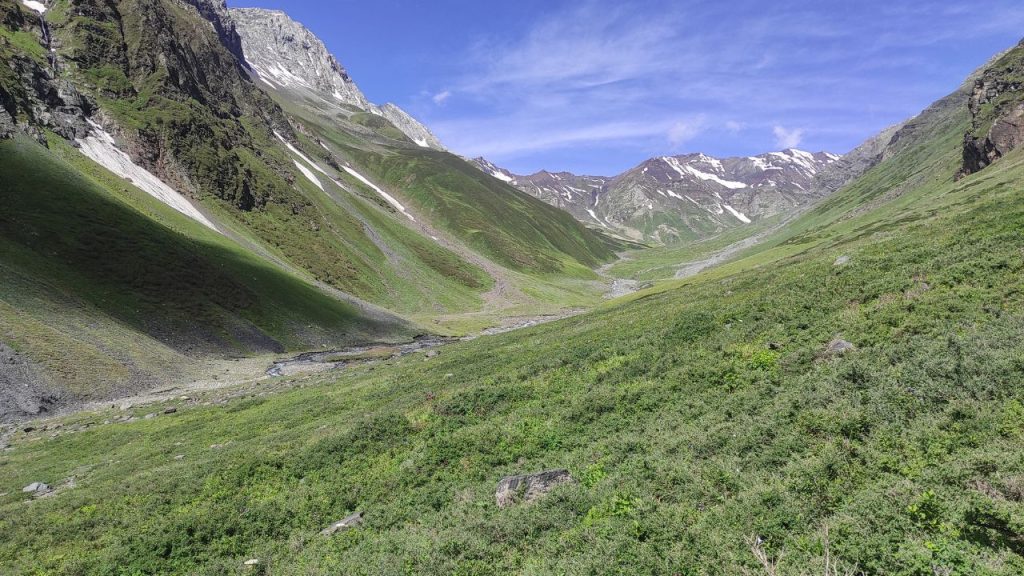
Tundah Wildlife Sanctuary is situated at the junction of Tundah nalla and river Ravi, 45 km from Dalhousie. The altitude of this sanctuary is 2074 to 5532 m and adjoins The Kugti Sanctuary from its (eastern side) through a forest corridor.
This beautiful central area is dominated by many kinds of Indian wildlife including Himalayan Tahr, Ibex, pheasants and lots; more. It is also home to a rare Musk deer.
Flora: Kail, Deodar, Poplar,, Robinia, Walnut Fir and Spruce etc.
Fauna:Ibex, bear, langur, leopard,musk deer,Himalayan tahr,Himalayan fox,barking deer.
Chamba Trek:
- Dainkund Peak Trek
- Kugti Pass
- Manimahesh Trek
- Sach Pass Trek
Dainkund Peak Trek:
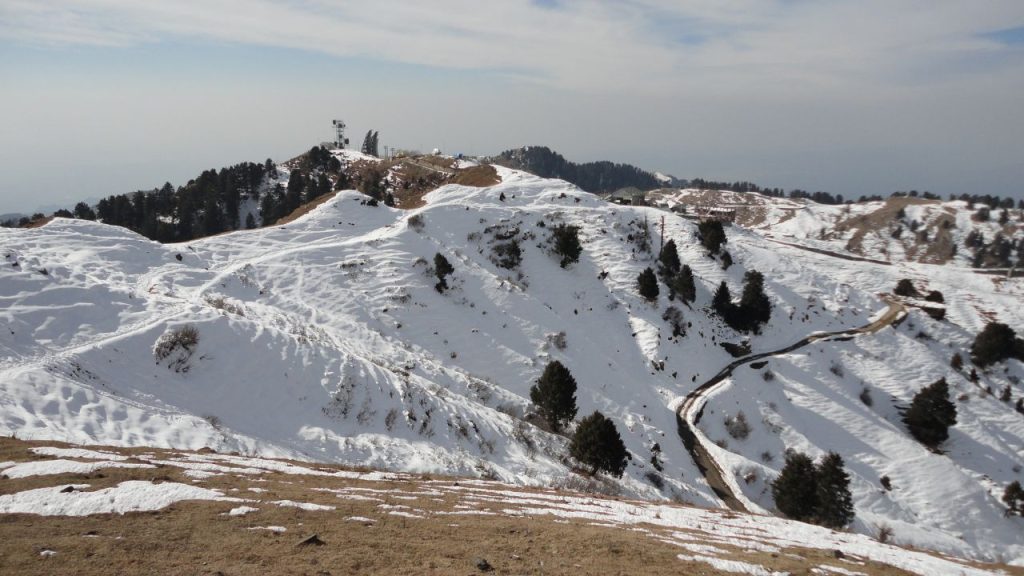
- Best Time To Visit: March to June
- Open Hours:24 hours
- Activities To Do :Trek,Photography,Temple Visit
- Budget:No Entry Fee
- Difficulty:Easy-Moderate
- Flora & Fauna : Pine, Deodar Trees
Crown Jewel of Dalhousie and the Place for Nature Lovers.
Trekking to the Dainkund Peak is not difficult, but it helps you enjoy breathtaking beauty from a height of 2755 meters above sea level.Dainkund Peak is not only of trekking and recreational hiking value but it also resonates spiritually and culturally as Goddess Pholani Devi Temple resides at the peak alongside Air Force Base, indeed a perfect blend. For the people who love nature,adventure and peace this is a perfect place to explore.
Kugti Pass:
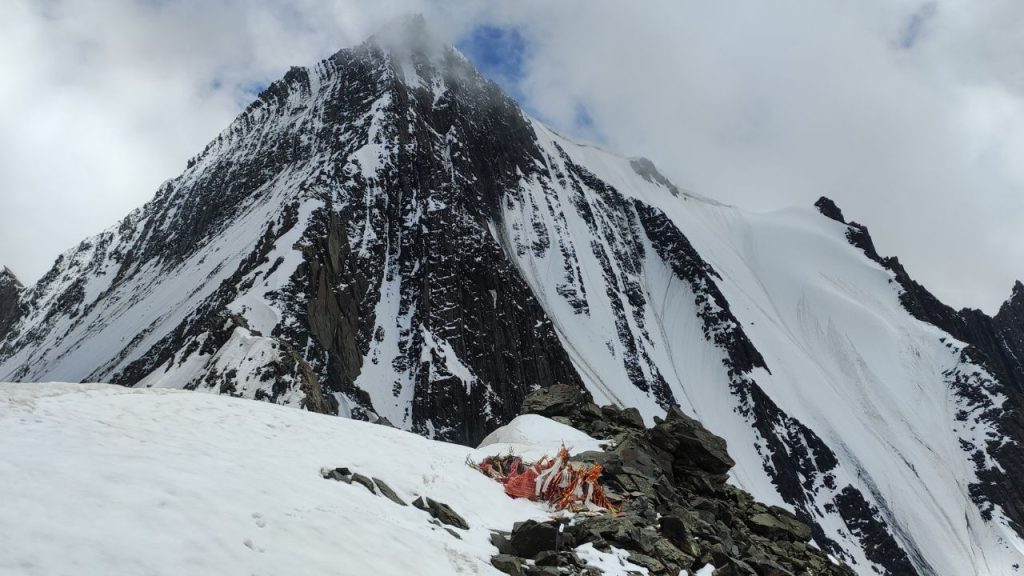
- Best Time To Visit: mid-June to mid-September.
- Open Hours: The trek can be carried out at virtually any time of 12 months.
- Activities To Do: Trekking, Photography, Camping
- Budget: Cost of entry fees/permits needed for the trek
- Difficulty: steep and rocky
- Flora: Alpine meadows, rhododendron forests and juniper trees.
- Fauna: The park also includes Himalayan black bear, snow leopard (rarely seen), musk deer and various bird species including the Himalayan Monal.
You will begin your Kugti Pass Trek from Bharmour,60 km by road from the beautiful town of Chamba. Similarly, Bharmour is well connected. Take any bus to Chamba from Pathankot to Chamba and then connect another bus for Bharmour.
There are many places in bharmour where one can stay but the best thing is to find a place from there, near the bus stand. You do not require pre-booking, and can even bargain the room rents.
Manimahesh Trek:
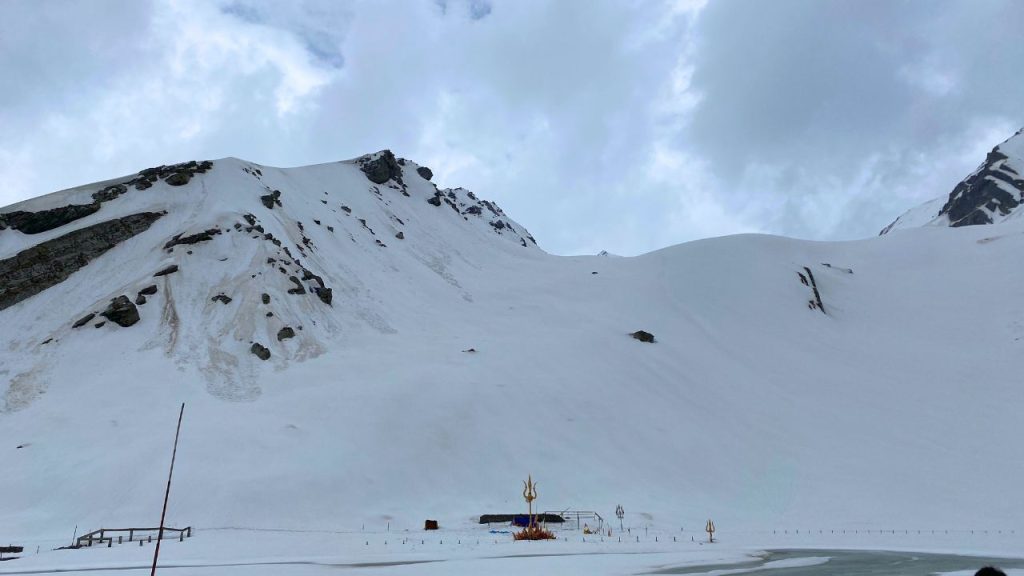
- Best Time To Visit: mid-July to mid-September.
- Open Hours: The trek is open 24/7
- Activities To Do: Trekking, Photography, Camping & Pilgrimage
- Budget: Trek fees and permissions needed to trek & visiting the temple of Manimahesh
- Difficulty: moderately challenging
- Flora: wildflowers such as primulas, potentillas and gentians
- Fauna: Himalayan black bear, musk deer.
Manimahesh Yatra is a sacred pilgrimage to the Manimahesh Kailas and takes place in the Chamba District of Himachal Pradesh. Legend has believe that Manimahesh Kailash was created by Lord Shiva after He married Goddess Parvati. Manimahesh literally translates to the jewel on top of Mahadev (Shiva). Manimahesh is still clearly a hidden plot to the humans, as no person has yet conquered it.
Sach Pass Trek:
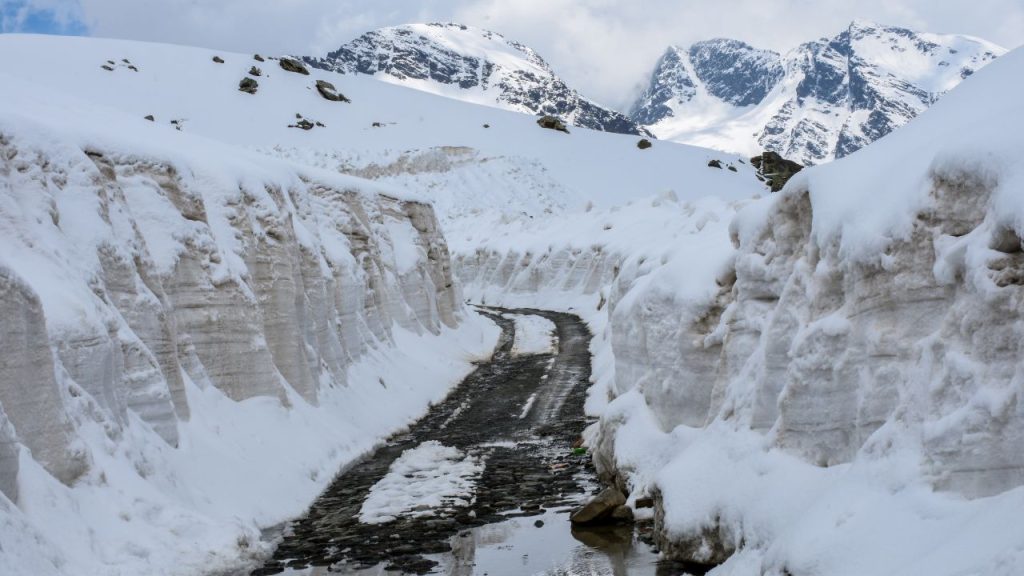
- Best Time To Visit: June to September.
- Open Hours: The trek is open 24/7
- Activities To Do: Trekking, Photography, Camping
- Budget: Cost of entry fees/permits needed for the trek
- Difficulty: considered challenging
- Flora: edelweiss, primulas and the blue poppies. There are also pine and fir trees.
- Fauna: Snow leopard (extremely rare), musk deer, ibex, Himalayan tahr & various bird species include the Himalayan Monal.
Himachal is home to some of the finest treks in India that take you across towns stretching with meandering rivers, flowy forests and fruit orchards. Of all the amazing trekking tours in Himachal Pradesh one can go for Sach Pass Trek. Sach Pass is one of the oldest trails in Himachal that villagers used to cross over from Chamba district and snow-bound Pangi Valley beyond.
Lakes In Chamba
- Manimahesh lake
- Chamera lake
- Khajjiar lake
- Maharana Pratap Sagar Lake
Manimahesh Lake:
- Manimahesh Lake also called as called Dal and Manimahesh
- It is a high height lake (height 4,080 meters or 13,390 ft) arranged near the Manimahesh Kailash Peak in the Pir Panjal Range of the Himalayas, in Bharmour sub-division of Chamba region of Himachal Pradesh.
- This lake of religious significance is next to none other than Lake Mansarovar in Tibet.
Chamera:
- It is a man-made lake, which is encircled by lush green trees and flawless valleys.
- It opens doors to other water sports activities such as boating and fishing
- It is also a division of the hydroelectric project which goes by Chamera built over the Ravi River.
- This lake is located at an altitude of 763 meters above the sea level and accessible from Chamba district, which is only about 25 to35 kilometers away from the main market Dalhousie.
Khajjiar:
- A little village, Khajjiar is placed on a saucer-molded glen at an elevation of 1939 m.
- Has tempting meadows outdoors.
- The hill station is surrounded by meadows and forests. The airstrip is at an elevation of about 6,500 ft (2,000 m) above sea level in the foothills of India’s Western Himalaya mountains and there are peaks visible on approach.
- It is a part of the Kalatop Khajjiar Sanctuary.
Maharana Pratap Sagar Lake:
- One of the largest man-made lakes also known as Pong Dam Lake, in Himachal Pradesh.
- The Pong Reservoir or Maharana Pratap Sagar was created in 1975, by building the highest earthfill dam in India on the Beas River.
- Birdwatchers can find their way here where a lot of migrating birds are seen in winter.
- It is also a preferred destination for boating or Kayaking water sports. It covers a stunning hilly area with rich wildlife, including deer, wild boars and hundreds of bird species.
Best Time To Visit Chamba:
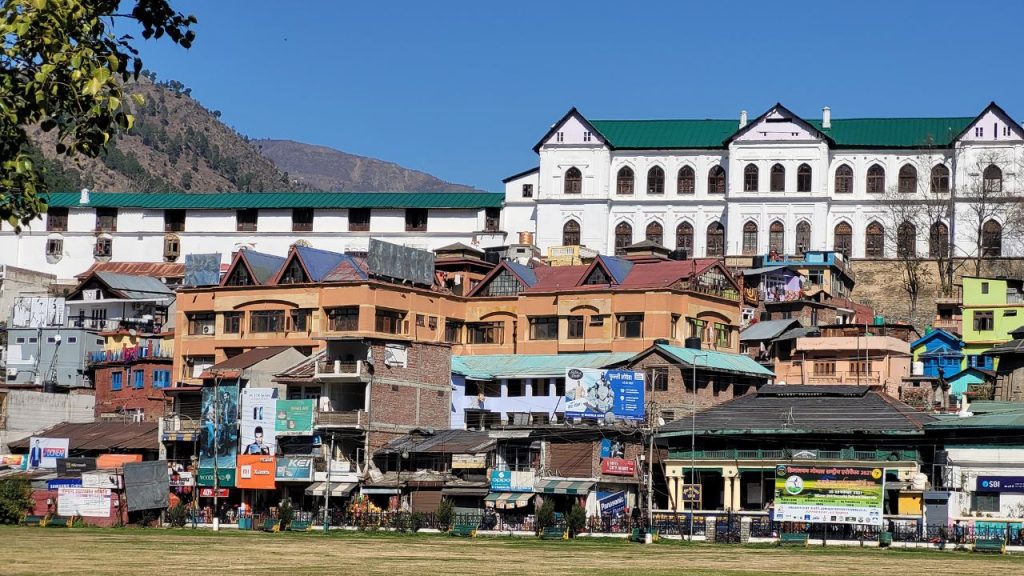
April-June (Peak Season)
- Temperature : 15 to 30 degrees Celsius (pleasant)
- Being the time of peak tourism in this hidden gem, overcrowding at highlights like Chamba Central Park and Bhuri Singh Museum can be expected.
- It is also the time of several cultural and religious festivals including Minjar Mela, Suhi Mata Mela.
Oct-Mar ( Moderate Season)
- 0-15 degrees Celsius of cold weather.
- The city has fewer tourists so you can take your time exploring.
- The snowy hills in the vicinity lend a mystical touch to the skyline.
- Nothing wrong with budget-friendly accommodations during the off-peak season.
Jul-Sep (Off Season)
- 20 to 30 Degree Celsius Temperature in Monsoon Time
- A great time to visit as it is less busy and you can take your own sweet time exploring the place.
F&Q’s about Things To Do In Chamba
Q1. What is the famous thing in Chamba?
Ans: The ancient temples and architectural heritage of Chamba is one the most popular things. It is famous for its wonderfully carved temples displaying the skill of native artisans. Temples like Lakshmi Narayan Temple, Chamunda Devi temple and Bhuri Singh Museum are some of the major places that give an insight into the rich cultural past of Chamba.
Q.2. What is special about Chamba?
Ans: Famed for its ancient temples, especially the Lakshmi Narayan Temple and Chamunda Devi groves At these temples, in addition to the fine carvings and architectural styles of stone work down from century reflects legacy heritage makes the temple a culturally sparkling town. It has picturesque scenery that is cloaked with scenic beauty of the lush green valleys, flowing rivers like Ravi river and snow draped mountains. It is a travelers paradise, and it provides visuals that can create the perfect settings for trekking or some shutter bugging.
Q.3. What is the famous thing to buy in Chamba?
Ans: Known for its crafts like the Chamba Rumal, an embroidered handkerchief of Chamba which is essentially painted with religious figures or stories. Hand-embroidered needlepoint textiles are considered works of art in many places for their artistic design and craftsmanship, as well. Metalwork, wooden carvings and miniature paintings are only some of the other noteworthy handicrafts.
Q.4. What is the famous food of Chamba?
Ans: Chamba is predominantly and rich in Himachal Himalayan cuisine with influences from Punjabi cuisines. There are a few famous dishes that you must try:
Madra – A traditional Himachal curry is made with chickpeas or kidney beans cooked in yogurt and spices.
Chana Madra: A type of madra, made with chickpeas.
Dham: A vegetarian meal that includes rice, dal (pulses), rajma (kidney beans) etc., a special occasion/ festival feast.
Sidu: A filling usually prepared from wheat flour, walnuts and other things that can be eaten with ghee.
Q.5. What is the specialty of Chamba?
Ans: Chamba is known for its rich cultural heritage, famous Chambiyali paintings and beautiful hillmarts (locally made handicrafts) among many other things such as ancient temples etc. The quiet town and its practices serve as a haven for those who are wanting to gain some Himalayan charm. The mixture of picturesque beauty, spiritual relevance and popular culture has made Chamba a city which stands out from the others in Himachal Pradesh.


